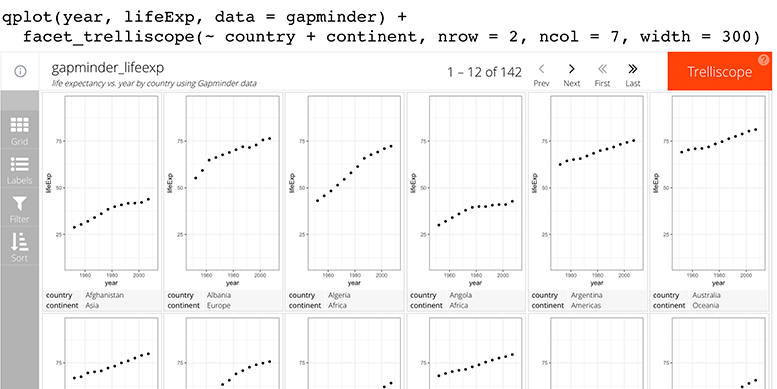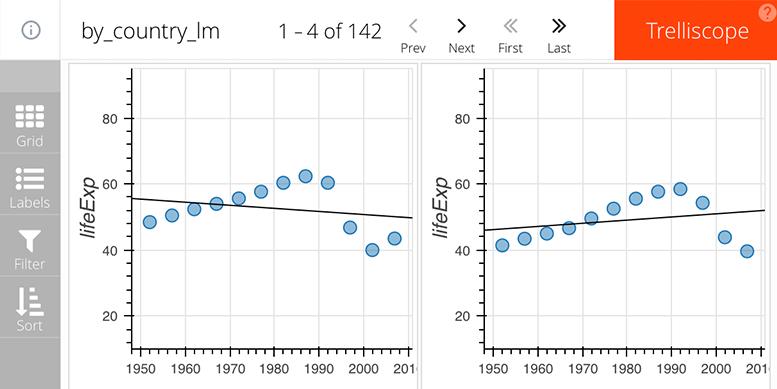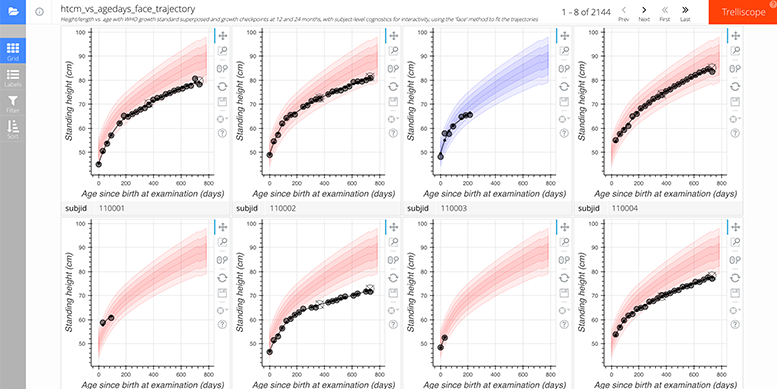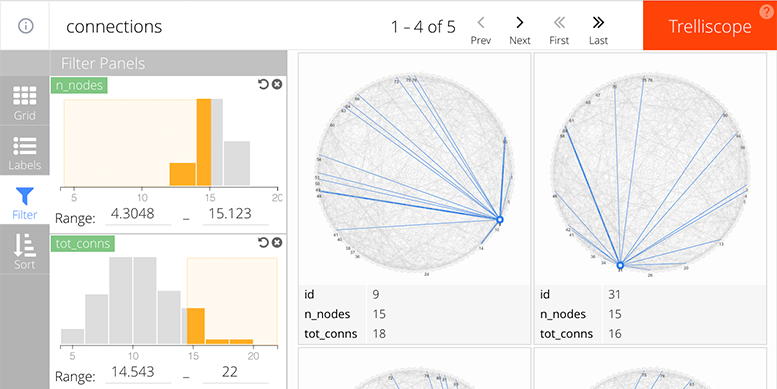Access the R/package
Trelliscope provides a simple interface for creating and viewing detailed visualizations of data. The ability to view the data in detail is vital to understanding the quality of the data and suitability of fitted models, and helps bring to light interesting phenomena in the data that would be missed by looking at summary statistics.
Intended Use
Trelliscope visualizations of longitudinal growth trajectories provide data scientists and researchers with a simple way to assess the quality of recorded anthropometry and fitted models, even when a study has many subjects.
Stage of Development
Ongoing
A primary use case walk-through of Trelliscope
The Challenge
When visualizing large, complex data sets, a common approach is to calculate and use summary statistics to compose and view a single visualization. This may be useful, but interesting behaviors in the data may be masked by the summary statistics. Visualizations that enable a user to look at the data in more detail can be difficult to create in a flexible way, because interactive controls are usually needed to help the user navigate the large data space visually.
Trelliscope addresses this challenge by dividing the data into subsets based on variables in the data, creating a visualization of the detailed data for each subset, and providing an interactive interface for the user. The user may navigate a collection of visualizations based on interesting metrics that are computed for each data subset.
A common use of Trelliscope in HBGDki is to divide a longitudinal data set by subject, and plot each subject’s trajectories over time – possibly accompanied by a model fit – enabling users to perform detailed inspection of each child’s growth curve.



